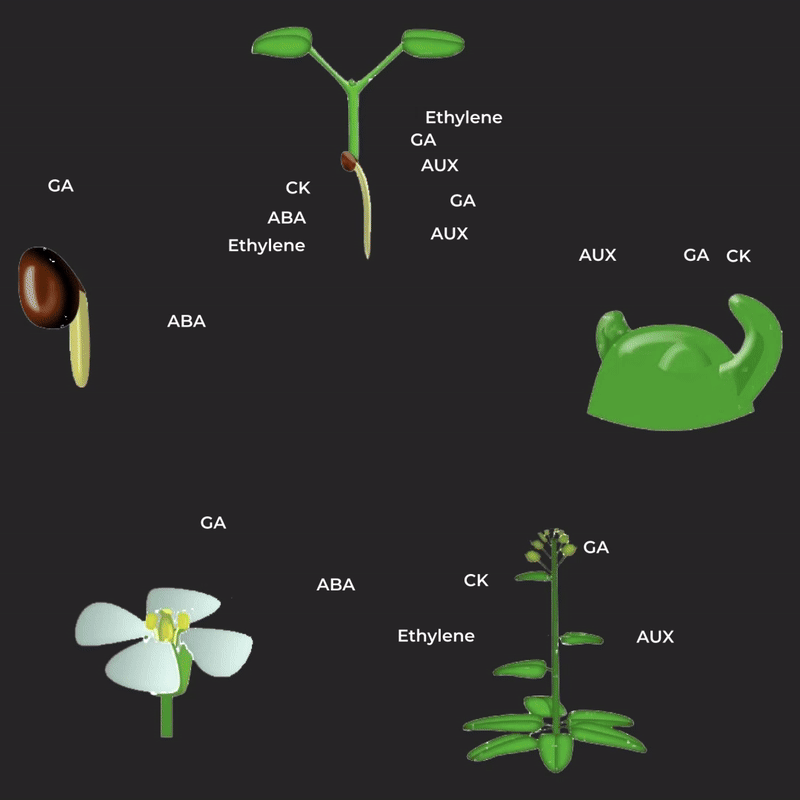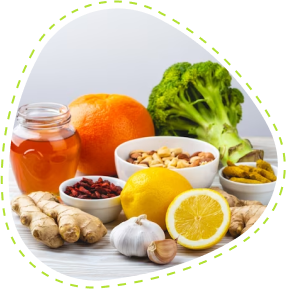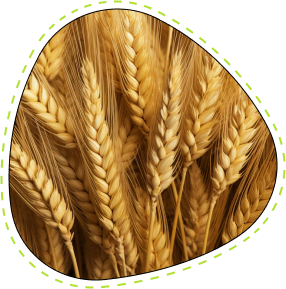


Plant Growth Regulators (PGRs) are small, simple molecules naturally produced by plants to control their growth and development. These molecules, often effective at extremely low concentrations, influence various aspects of plant growth. There are both natural regulators, which the plant synthesizes itself, and synthetic ones. Naturally occurring regulators are referred to as phytohormones or plant hormones.
Hormones are grouped into different categories based on their chemical structure. Although specific structures within each category vary, their physiological effects remain similar. Early studies on plant hormones identified five key categories: abscisic acid, auxins, cytokinins, ethylene, and gibberellins. Based on their effects, plant hormones can be broadly categorized as follows:
- Plant Growth Promoters: These hormones encourage processes like cell division, cell enlargement, flowering, fruit production, and seed formation. Examples include auxins, gibberellins, and cytokinins.
- Plant Growth Inhibitors: These substances suppress growth while promoting dormancy and the shedding of plant parts. Abscisic acid is an example.
Arihant Group offers a comprehensive range of plant growth regulators, each playing a distinct role in meeting the plants’ needs at various growth stages.
Types of Plant Hormones
Abscisic Acid
Initially referred to as “dormin,” abscisic acid is heavily involved in inducing dormancy in plants. It regulates seed development, facilitating the transformation of an embryo into a mature seedling. Additionally, abscisic acid plays a significant role in helping plants respond to changes in temperature and water availability.
When temperatures rise, water evaporates from the stoma—tiny openings in the leaves. If the temperature becomes high enough to cause significant water loss, abscisic acid is synthesized and released into the leaves. This triggers the stoma to close, conserving water within the plant. Without this hormone, plants would struggle to maintain their water balance. This regulation is vital for vascular plants to survive and thrive.
Auxins
Auxins are a group of plant hormones that play a crucial role in regulating various aspects of plant development. Primarily, they influence cell enlargement and elongation. Auxins also enable plants to respond to external stimuli such as sunlight (phototropism) and gravity (gravitropism). In many plant species, auxins help determine the direction of growth.
The concentration of these hormones varies across different parts of the plant, guiding specific developmental processes based on the species. For example, in fruit-bearing trees, auxins are involved in initiating nutrient flow and completing the fruiting process. In root crops like potatoes and carrots, auxins regulate starch storage within the roots.
How Phototropism Works
Cytokinins
Cytokinins are a class of plant hormones that closely interact with auxins to regulate various growth processes. They influence cell differentiation and metabolic activities by interacting with the plant’s DNA, either activating or repressing specific proteins. This interaction enables cytokinins to direct the development of specialized tissues for distinct functions within the plant.
In contrast to auxins, cytokinins are most concentrated in the roots and decrease in concentration as they move towards the shoots. This balance with auxins helps the plant establish and maintain its growth axis while promoting development in both upward and downward directions. When applied independently, cytokinins encourage root formation, auxins alone promote bud growth, and a combination of the two often leads to undifferentiated tissue development.
Ethylene
Unlike other plant hormones, ethylene is a single molecule and exists as a gas under normal conditions, enabling rapid communication within and between plants. Ethylene is typically produced in response to plant damage, such as bending, bruising, or breaking of stems. As a gaseous hormone, it diffuses quickly through the plant’s fluids and into the air, allowing plants to signal neighboring plants. These signals can trigger fruit ripening or activate defense mechanisms against herbivores.
Ethylene also plays a key role in prompting fruits, nuts, and vegetables to mature and detach from the plant, facilitating easier harvesting.
Increase Ethylene
Decrease Ethylene
Gibberellins
Gibberellins are regulatory plant hormones similar to auxins but with a stronger influence on cell division and overall plant growth. Dwarf plants often have genetic mutations that prevent the production or utilization of gibberellins. When such plants are treated with additional gibberellins, they can grow to a standard size. Gibberellins also play a key role in activating various enzymes.
In some plants, gibberellins function as sexual hormones, driving the development of male and female flowers. Alongside auxins, gibberellins impact the aging process (senescence) of plant parts. One of their critical roles is in breaking seed dormancy. Gibberellins activate enzymes like amylases within the seed, which convert stored starches into glucose, providing energy for the developing embryo. Additionally, they trigger other enzymes that supply amino acids and lipids necessary for the embryo’s growth.

Other Plant Hormones
In addition to the well-known plant hormones, four other key groups have been identified in recent years:
- Brassinolides:These are steroid hormones similar to animal hormones like estrogen and testosterone. While they are involved in cell division, the exact mechanisms by which they function remain unclear.
- Salicylic Acid: This hormone, like ethylene, facilitates communication between individual plants. It plays a role in responding to pathogens and attacks, functioning similarly to an immune system hormone in plants.
- Jasmonates : This group of hormones has functions akin to salicylic acid, particularly in defense responses.
- Systemin: This is a class of defense-related hormones that activate the expression of specific defense genes in plants after a part of their structure has been damaged.
Phytohormones
(Plant Hormones)







